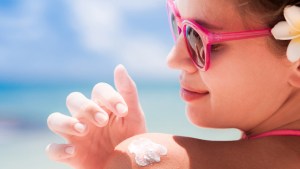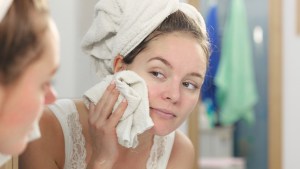Although it’s a great mood booster, in high doses the sun can also be the number one enemy of your skin. Learn how ultraviolet rays affect skin cells and how to protect yourself from sunburn. Don’t let a painful sunburn ruin your vacation — treat your skin with care.
The dangers of sun exposure
The sun’s ultraviolet rays are damaging to the skin. Invisible to the naked eye, UVA rays are responsible for aging the skin, creating wrinkles and brown spots. UVB rays might give you a tan, but can also cause more serious sunburns. In high doses, they are carcinogenic. Some damages are irreversible, so don’t risk exposing yourself without protection.
Limiting sun exposure
Ultraviolet rays are particularly strong when the sun is at its highest. It is important to avoid sun exposure during these times, even if the heat does not feel intense.
Babies should never to be exposed to the sun. Since their skin is more vulnerable to the sun’s rays, they should be kept in the shade no matter the time of day.
Sun protection
To be well protected, wear a dry T-shirt, a hat (with a wide brim or neck cape), and a pair of sunglasses. UV rays affect not only the skin — they can also damage the eyes. Wear long sleeved shirts and pants for optimal protection from the sun. Some fabrics are specially designed for sun protection. UV protection information can usually be found on garment tags.

Read more:
10 Myths and facts you should know about sunscreen
If naturally shady places are hard to find, create your own. A parasol, canopy, or awning can provide shade and can be moved as the sun changes position throughout the day. Don’t underestimate the refraction of rays off the ground, even more powerful on snow than on sand.
Choosing sunscreen
Sunscreen is indispensable during sun exposure. The sun protection factor (SPF) refers to the amount of protection your sunscreen offers — typically ranging from SPF 15 to SPF 50. SPF 15 blocks approximately 93 percent of UVB rays, while SPF 30 blocks approximately 97 percent of rays, when properly applied.
Choose the appropriate sunscreen for your skin type.
Skin type 1: Ivory skin, red or blonde hair, many freckles. Never tans and at high risk of sunburn. Use SPF 50 or more, applied frequently. Avoid sun exposure during peak hours.
Skin type 2: Fair skin, blonde or light brown hair, some freckles. May gradually tan, risk of sunburn. SPF 50.
Skin type 3: Light olive skin, light to dark brown hair, minimal freckles. Gradually tans, may burn. SPF 50 when sun is highest, otherwise SPF 30.
Skin type 4: Olive skin, brown or black hair, no freckles. Tans quickly, rarely burns. SPF 30.
Skin type 5: Brown skin, black hair, no freckles. Tans quickly, rarely burns. SPF 15.
Skin type 6: Black skin, black hair. Very rarely burns. SPF 15.
If you’re unsure of your skin type, use SPF 50, which works for all types. If you have sensitive skin, choose a sunscreen specially formulated with safe ingredients and minimal allergens.

Read more:
5 Common skincare myths exposed
Sunscreen blocks a percentage of the sun’s rays from damaging your skin, but does not offer indefinite protection. Reapply sunscreen to all exposed skin every two hours and after swimming. Don’t forget often overlooked areas such as the back of the neck, ears, and feet.
Treating a sunburn
If your skin has been damaged by the sun, it will need to be treated. Rehydrate by drinking plenty of water. Wash your skin with clean water, dry carefully, and apply an after-sun cream. Avoid the sun to allow your skin to heal. Heat will aggravate the pain of your sunburn, so be sure to stay in cool and shady areas.
In the case of a first-degree burn, treat with a medicated ointment to promote hydration and healing of the affected area. Second to fourth degree burns can be intensely painful, often accompanied by blisters and scabs. Seek medical attention for severe burns.
This article was originally published in the French Edition of Aleteia.

